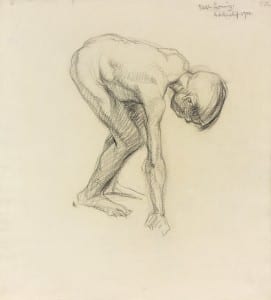Francis Galton and the History of Eugenics at UCL
By Subhadra Das, on 22 October 2015
The shadow of Sir Francis Galton looms large over UCL.
Francis Galton is the most famous and influential Victorian scientist you’ve never heard of. He coined the term eugenics and endowed UCL with his personal collection and archive, along with a bequest which funded the country’s first professorial Chair of Eugenics. Mahmoud Arif, a UCL student who attended “Why isn’t my Professor black?” questioned why, by holding this material and naming a lecture theatre after him, UCL appears to celebrate a known racist . Another student, Adam Elliot-Cooper, began his speech at a student protest in the summer by pointing to the Galton Lecture Theatre, which itself was the venue for the first ‘UCL Faces Race’ event last year where Galton and his work featured prominently.
As Curator of the Galton Collection, I’ll admit that when I first heard that Galton had been name-checked in these discussions, my first response was “Oh, God, they’re going to want to burn the collection.” (Some Museum Studies degrees can include up to a whole module on ‘Curatorial Paranoia’.)
Specimen of the Week 210: the fin whale foetus
By Will J Richard, on 19 October 2015
Hello! Will Richard here, bringing you your weekly dose of specimen. And this time it’s a real giant. I did a quick calculation and the average fully-grown version is equal to 875 of me. That’s 10 more than the “maximum capacity” of a District line tube train, 10 and a half packed double-decker buses or 175 full cars. So in conclusion… it’s lucky that fin whales don’t commute. This week’s specimen is…
Read the rest of this entry »
Specimen of the Week 209: Mammoth tusk
By Tannis Davidson, on 12 October 2015
This week’s Specimen of the Week is one of the first objects to be seen upon entering the Museum. Majestically, it sits just behind the front desk cradled in a graceful arc of perfect balance and symmetry. It is the largest fossil in the Grant Museum’s collection and although incomplete, measures over 1.7m in length. What a beaut! This week’s specimen is…
All hands on deck: the Petrie team welcome term
By Alice Stevenson, on 9 October 2015
The rhythm of life in a University museum like the Petrie is set by the academic year. As of 28 September, with the return of large numbers of students, the tempo shifted up a notch. Several notches in fact. Needless to say it is all hands on deck.
Fun with Minerals
By Nick J Booth, on 8 October 2015
This is a guest post by Nadine Gabriel, a UCL student and volunteer with UCL Museums. All photos by the author.
Hello there, I’m Nadine Gabriel and I’ve been working with the UCL Geology Collections for just over a year. Towards the end of the summer holidays, I was given the chance to audit the thousands of mineral specimens in the Rock Room to ensure that we have a record of what is (and isn’t) in the collection. While auditing the collection, I handled a wide variety of specimens and learnt about new minerals and their classification – I’ve come across so many minerals that I’ve never heard of, even after doing two years of geology. But the best thing about working with the collection was saying ‘ooh’ and ‘ahh’ every time I saw a nice shiny mineral.
When I first started working with the geological collections, my audits involved working with Excel spreadsheets and paper catalogues filled with entries from way before I was born. Read the rest of this entry »
Specimen of the Week 208 (Four years!): The four-eyed opossum
By Jack Ashby, on 5 October 2015
As those of you who can divide 208 by four – or have read this post’s title – will have realised, four years ago this week Specimen of the Week was born.
The main aim of this series is to shed light on parts of the collection that you might not spot among the thousands of specimens in our dense displays. Occassionally we do want to give extra attention to a “hero” specimen, but by and large it’s the also-rans that get featured.
Some might think that this honour should be reserved for animals at the lower end of the human-centred pecking order (fish and invertebrates, for instance), but there are many mammals that go unloved too. This one is no exception. It is so unloved that its Wikipedia page comprises of only five lines.
This week I’m featuring the first animal that came to mind when I tried to think of something related to the blog’s age: Four.
This week’s Specimen of the Week is… Read the rest of this entry »
Spotlight on the Slade – October 2015 update
By Jenny M Wedgbury, on 1 October 2015

Percy Wyndham Lewis, Stooping Nude Child, 1900, Black Chalk, UCL 6003 (The Estate of Mrs G.A. Wyndham Lewis. By permission of the Wyndham Lewis Memorial Trust (a Registered Charity)
Blog post by Helen Downes, Paul Mellon Centre Research Curator, UCL Art Museum
UCL Art Museum’s Spotlight on the Slade project is well underway with the first phase of the project: Full cataloguing of the collection of some 1,700 drawings. Dating from the 1890s to the present day, this collection of largely prize-winning drawings offers a unique insight into student work and teaching methods at the Slade. Current focus is on the late 19th, early 20th Century and is yielding some interesting findings. Read the rest of this entry »
Glass Delusions opens today
By Jack Ashby, on 1 October 2015

A photogram created by exposing photo-sensitive paper with the Grant Museum’s glass sponge specimens sat directly on it. (C) Eleanor Morgan
Glass Delusions is a new exhibition at the Grant Museum featuring works by the Museum’s Artist in Residence, Eleanor Morgan. Using prints, drawings, videos and objects Eleanor explores the slippery boundary between living and non-living materials.
Over the past year, Eleanor has been drawing inspiration from our collection of glass sponges. These are intricately formed deep-sea animals that naturally build themselves out of glass – the are 90% silica, which they draw out of the sand in their environment.
Underwhelming Fossil Fish of the Month: September 2015
By Mark Carnall, on 30 September 2015
I’M BACK! Last month’s rumours of the end were nought but a dramatic device! I may have left UCL and although it was easy to turn my back and walk away from colleagues I’d worked with over the last decade, I couldn’t leave the underwhelming fossil fish behind so this communiqué comes from the Oxford University Museum of Natural History.
For first time readers, the mission of this blog series is to turn our attentions to the spectacularly unspectacular fossil fish in the Grant Museum each month. These fish, like so many others in museum collections, are uncelebratable, unrelatable and originally collected for research no longer referenced or cared about. Every museum has specimens like these. Are they useless? Why do we have them? Why should you care? None of these questions will be answered here, instead I ask that you clear your mind, read on, and one by one we’ll improve global fishteracy, one underwhelming fish fossil at a time.
This month, in order to celebrate the return of the series I’ve been sent images and a description of personally hand-picked out something particularly unspecial in time honoured tradition for this series. Extra points for you if you stay awake/alive til the end of this one, it’s a slog.
Read the rest of this entry »
Specimen of the Week 207: Threetoothed pufferfish
By Dean W Veall, on 28 September 2015
Hello Specimen of the Week readers. Dean Veall here. I’ve chosen a specimen that’s often caught my eye but I was never too sure about what type of fish it actually was. It is possibly the specimen in the Museum with the least representative name. I give you this week’s Specimen of the Week …. Read the rest of this entry »
 Close
Close








